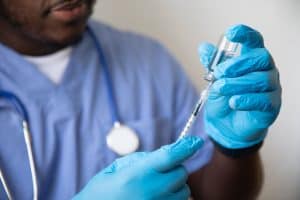Sanofi-Aventis commits 100 million euros to Chinese expansion
pharmafile | April 23, 2009 | News story | Research and Development | Asia, China, Sanofi-Aventis
France's Sanofi-Aventis is planning a major capital investment programme in Beijing in a bid to bolster its position in the fast-growing Chinese market.
The company is spending $90 million (about 70 million euros) to expand a Beijing plant making its insulin pen Lantus (insulin glargine) SoloSTAR.
It has also earmarked 31 million euros to relocate a factory in Hangzhou, which currently repackages a number of its cardiovascular and anticancer products, to a new industrial site in Beijing that will open in 2012.
These investments follow a $94 million programme that Sanofi-Aventis initiated in 2007 to build a manufacturing facility in Shenzhen, China, for its Vaxigrip seasonal influenza vaccine. This plant is also due to come online in 2012.
Like many of its peers in the pharmaceutical industry Sanofi-Aventis is shifting production into emerging markets such as China to tap into new and increasingly affluent patient populations.
The company says it was the first multinational big pharma to open an office in China, and that it remains committed to meeting the public health needs of the country. The timing of the new investment seems to be perfect; earlier this month the Chinese government announced a major reform initiative that will see around $75 billion injected into the country's healthcare system over the next three years.
The bulk of the capital injection will go towards building pre-filled injection production lines to make Lantus SoloSTAR, boosting capacity to 50 million units a year.
Lantus SoloSTAR was first introduced in 2007 and has been a major growth driver for the Lantus' brand, which saw sales advance nearly 28% to 2.5 billion euros in 2008. Sanofi-Aventis has been investing heavily in manufacturing capacity for Lantus to meet that demand, spending over $220 million on its 'insulin city' in Frankfurt, Germany, in order to hike production capacity to a million insulin pens a day.
Lantus is now among the world' biggest insulin brands, driven by its position as the standard insulin product for type 2 diabetes as well as rocketing demand for insulin pens. Worldwide annual demand for insulin pens shot up from 2-3 million in 2000 to 42 million by 2006, and is tipped to reach 150 million in 2010.
Insulin regimens that combine a once-daily basal insulin analogue like Lantus with a rapid-acting insulin at mealtimes, such as Sanofi-Aventis' own Apidra (insulin glulisine) – which has just been launched in the SoloSTAR pen format in the US, are increasingly popular as they closely mimic normal insulin secretion.
The number of people worldwide suffering from diabetes is accelerating, from 30 million in 1985 to nearly 200 million today and a predicted 330 million by 2025. Much of the diabetes epidemic will be in China and other markets of increasing affluence such as India. Figures from the International Diabetes Federation indicate there are about 40 million diabetics in China at present.
Related Content

AstraZeneca and Sanofi’s Beyfortus approved in China
AstraZeneca and Sanofi have announced that Beyfortus (nirsevimab) has been approved in China for the …

First patient enrolled in Boan Biotech’s phase 3 trial for Nivolumab in China
Boan Biotech has announced that the first patient has been enrolled in its phase 3 …

AstraZeneca’s Calquence approved in China for chronic lymphocytic leukaemia treatment
AstraZeneca has announced that Calquence (acalabrutinib) has been approved in China for the treatment of …








